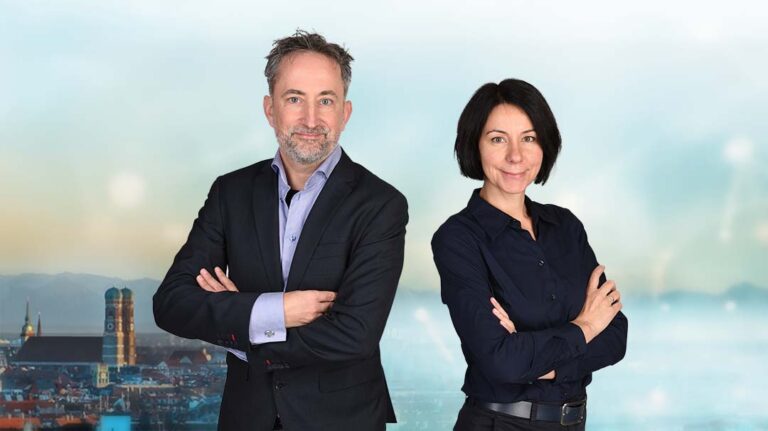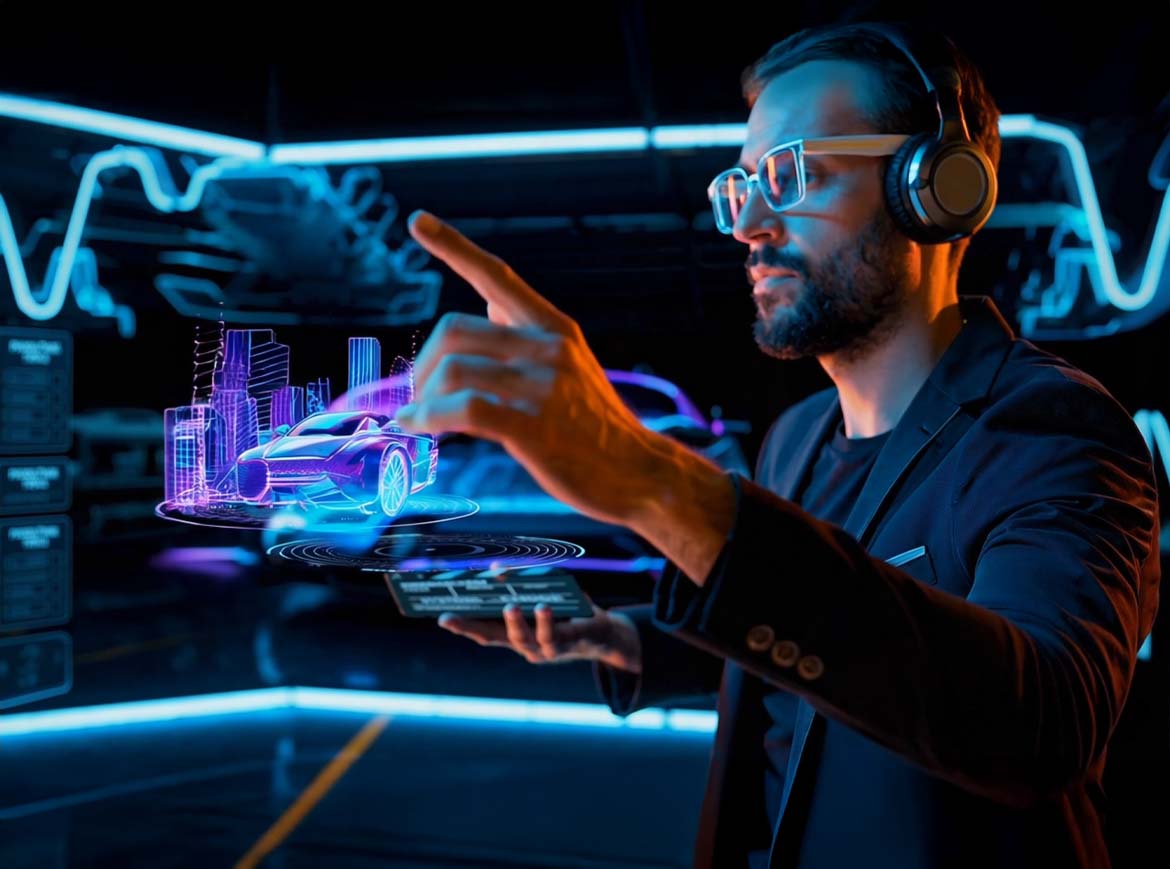AI-Powered Content Creation in Practice
Image: © Ulrich Buckenlei – Visoric GmbH
Generative Video Editing & AI Postproduction
In modern postproduction, AI-powered tools such as Runway and Wonder Studio are revolutionizing entire workflows. Instead of laboriously editing scenes by hand, AI analyzes video content in real time, detecting objects, lighting conditions, and motion patterns. This allows for retouching, object removal, or lighting adjustments at the click of a button. Automation accelerates editing and opens up new creative possibilities.
- Object Removal: Elements can be automatically removed from scenes
- Relighting: Lighting conditions can be AI-adjusted
- Motion Tracking: Movement paths are intelligently detected and analyzed
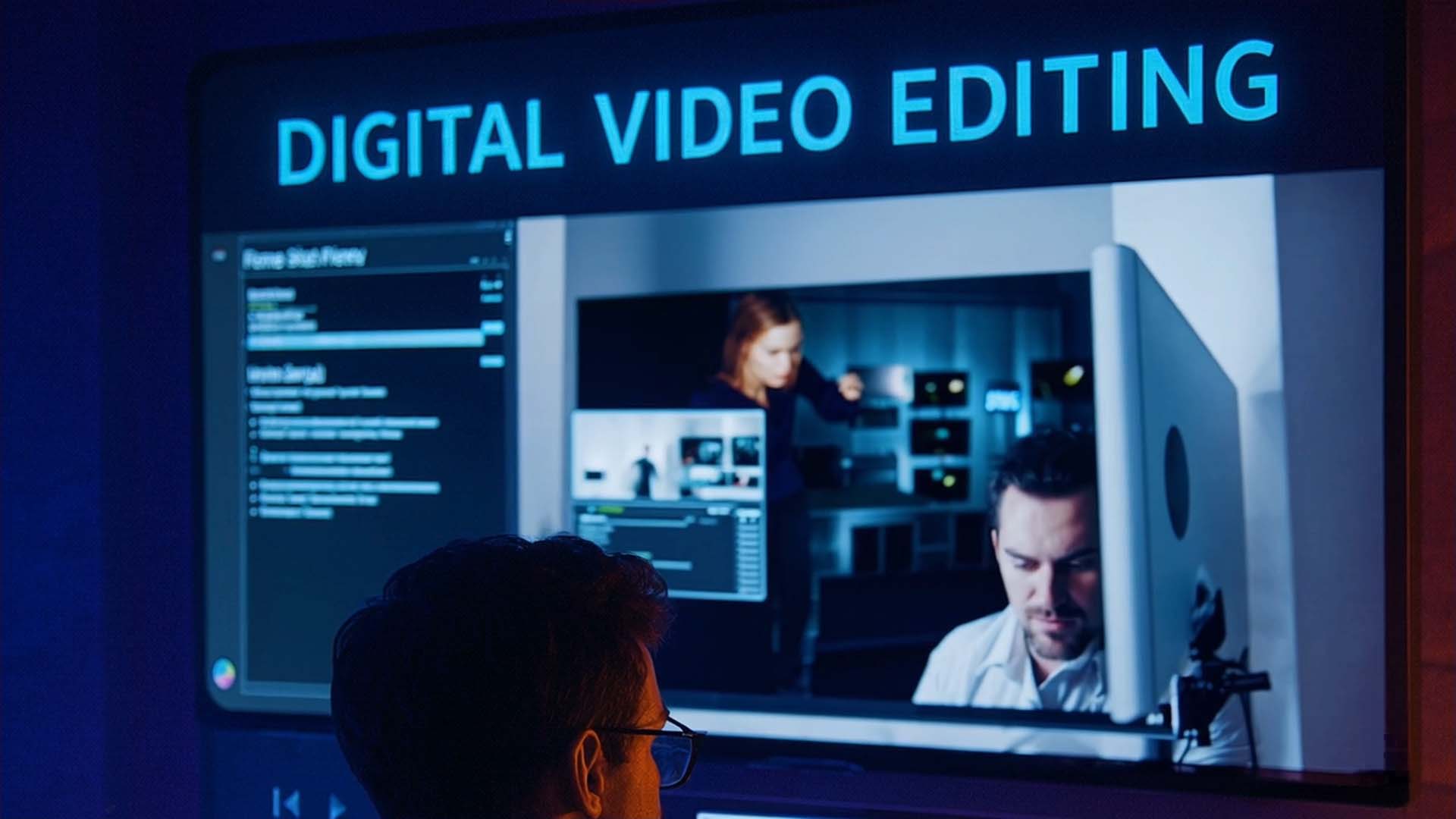
AI-powered Video Editing
Image: © Ulrich Buckenlei – Visoric GmbH
By integrating with text-to-video systems, AI tools can even suggest video cuts automatically, based on story logic or music rhythm. In advertising and social media marketing, this enables highly dynamic clips tailored automatically to audiences and platforms.
Text-to-Video Creation & Prompt-based Cinematics
The vision of creating film scenes using only speech or text is becoming reality. Tools such as Sora and Pika Labs generate photorealistic sequences from simple prompts—with camera movements, light gradients, and animated characters. This development is transforming preproduction in particular: storyboards, animatics, or pitches can be visualized more quickly.
- Text-to-Scene: Generation of film scenes from text prompts
- Cinematic Templates: Automatically generated camera angles and lighting moods
- Previsualization: For advertising, games, and film environments
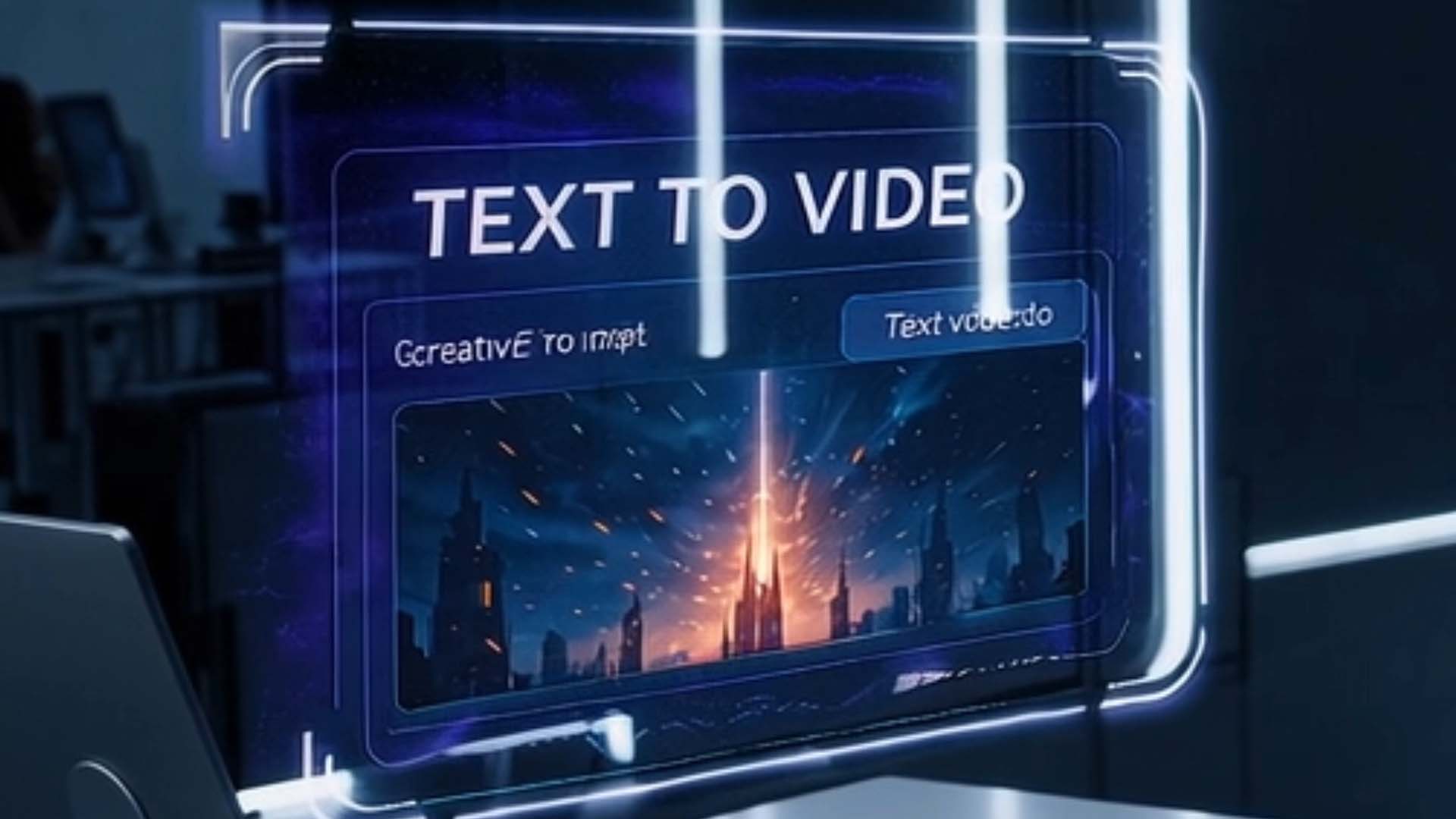
Prompt-Based Cinematics with Sora
Image: © Ulrich Buckenlei – Visoric GmbH
The quality of these outputs is advancing rapidly. Today, promotional trailers, social clips, and even intro sequences can be automatically produced—saving time and enabling diverse creativity.
Digital Avatars and AI Speakers in Action
Digital avatars that turn a photo into a lifelike speaker are gaining traction. Platforms like Synthesia and D-ID generate realistic facial animations with lip-syncing, voice, and expressions. Particularly in e-learning and corporate communication, they are increasingly replacing traditional speakers.
- Photo-to-Avatar: Creation of a synthetic speaker from an image
- Scripted Presentation: Speech, facial expressions, and gestures based on text
- Multilingual Scaling: Content can be instantly produced in multiple languages
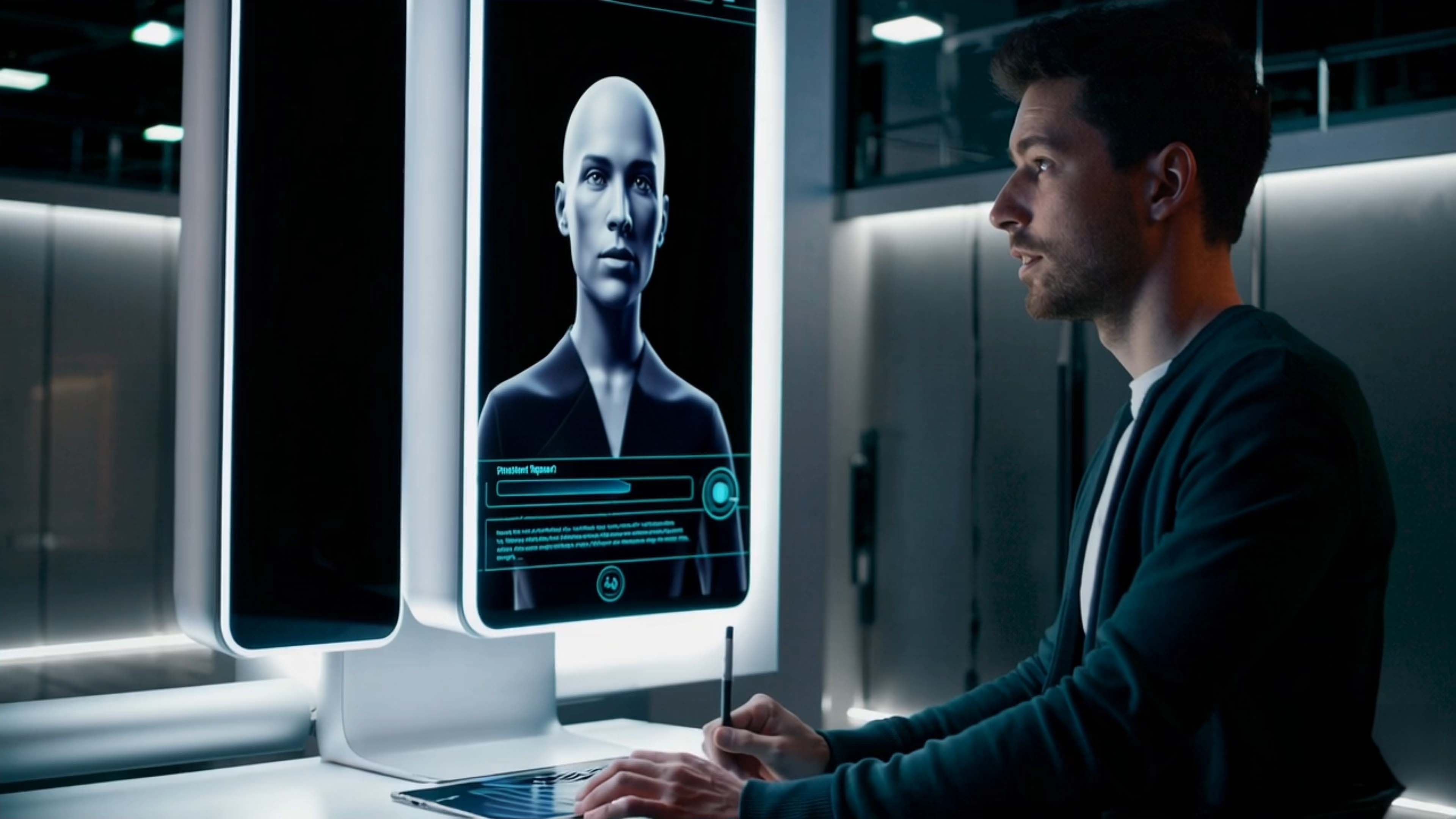
Digital AI Performers for Video Communication
Image: © Ulrich Buckenlei – Visoric GmbH
This not only reduces production costs for companies but also simplifies scalable communication. AI handles voice, image, and gestures—authentic and brand-compliant.
Audio-Visual Synchronization & Music-Driven Animation
AI is also revolutionizing the visualization of music. Systems like Kaiber analyze pitch, rhythm, and timbre—generating matching animations. The result: visually impressive music videos, explainer clips, or interactive visualizations for social media.
- Music Analysis: Rhythm, volume, and frequencies are automatically detected
- Synchronized Animation: Visual effects generated to match the music
- Use Cases: Music videos, marketing clips, data storytelling

Synchronized Music Visualization with AI
Image: © Ulrich Buckenlei – Visoric GmbH
Combining audio analysis and visual response paves the way for interactive formats. Innovative applications are also emerging in data visualization—from finance to art.
XR & Spatial Design with AI
With tools like Unity MARS, Apple Vision Pro, and NVIDIA Omniverse, spatial design, product visualization, and AI logic are converging. Users can configure objects, simulate scenarios, or create interactive experiences directly in 3D environments. This fundamentally changes the designer’s role.
- Spatial Interfaces: 3D design directly in space and in real time
- AI-Based Adaptation: Objects, materials, and lighting are calculated automatically
- Real-Time Prototyping: Faster validation of ideas and designs

AI and Spatial Design with Omniverse
Image: © Ulrich Buckenlei – Visoric GmbH
This results in immersive showrooms, training worlds, and product configurators that are not only visually impressive but also interactive, smart, and scalable.
Virtual Production & Real-Time Worldbuilding
With Unreal Engine, disguise, and other engines, entire 3D worlds are generated in real time. Combined with motion capture, LED walls, and AI, virtual productions are created that are fully simulated and orchestrated. This saves significant time and resources in advertising and filmmaking.
- Real-Time Sets: Dynamic environments with camera tracking
- AI-Generated Content: Textures, avatars, and movements are added
- Virtual Production Pipelines: Scalable processes for studios and agencies

Virtual Film Production with Unreal Engine
Image: © Ulrich Buckenlei – Visoric GmbH
The traditional studio is replaced by smart tools, dynamic worlds, and automated scene control. AI doesn’t write the script—but it provides the stage.
Infographic: AI in Content Creation
The following infographic highlights key technologies, tools, and use cases for AI-powered content creation. From text-to-video and AI presenters to audio analysis—it provides a clear overview of a complex landscape.
- Prompt Inputs: Text, image, video as a starting point
- AI Tools: Sora, Synthesia, Kaiber, Runway, NVIDIA
- Outputs: Video clips, avatars, animations, music visualizations
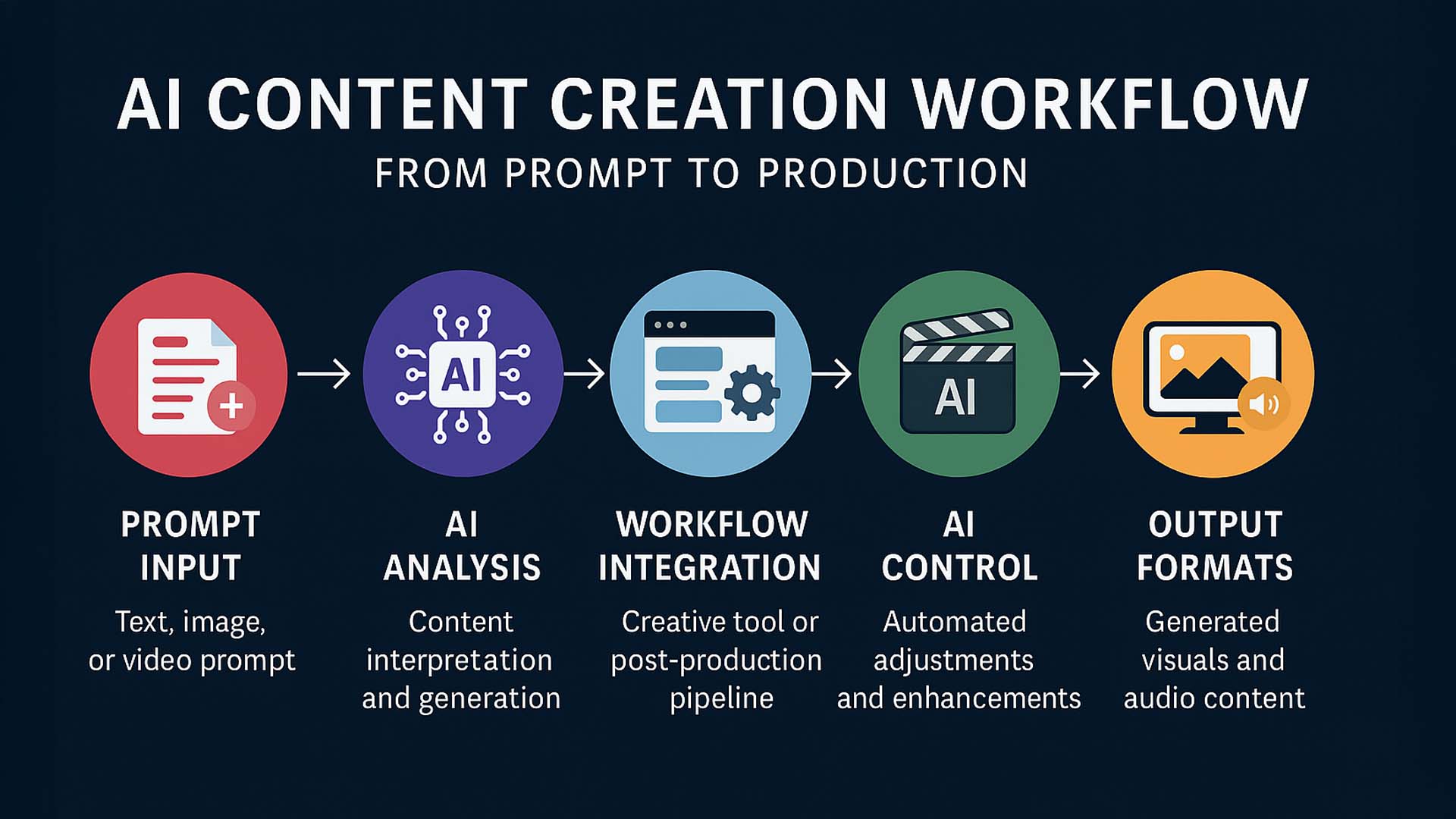
Infographic: Content Creation with AI
Graphic: © Ulrich Buckenlei – Visoric GmbH
The infographic makes one thing clear: AI is not just supportive—it unlocks creative freedom and enables productions that were previously impossible or unaffordable.
Video: AI Tools in Practice
The accompanying video demonstrates how modern AI tools are transforming content creation. It features live examples, tool demonstrations, and voiceover commentary. A perfect complement to the article—concise and visually compelling.
- Project Setup with Code-in-a-Jiffy: Basketball analysis with AI
- YOLO, OpenCV, and Zero-Shot Classifier: Technology in action
- From Pixels to Tactics: How visual data becomes strategy
Video: AI Content Workflow in Action
Video: © Ulrich Buckenlei – Visoric GmbH
How to Launch Your AI Project
Want to create your own AI-powered content or optimize existing workflows? Our experts support you with strategy, tool selection, and implementation. Whether it’s video, animation, XR, or avatars—we design creative, scalable solutions with real impact.
- Consulting & Prototyping: Initial concepts and test environments
- Content Creation: AI-generated videos, avatars, music, animation
- Deployment & Platforms: For web, mobile, XR, and broadcast
Get started now: Leverage new opportunities—and choose smart, substance-driven AI production. Contact the Visoric team for a non-binding initial consultation.
Contact Us:
Email: info@xrstager.com
Phone: +49 89 21552678
Contact Persons:
Ulrich Buckenlei (Creative Director)
Mobil +49 152 53532871
Mail: ulrich.buckenlei@xrstager.com
Nataliya Daniltseva (Projekt Manager)
Mobil + 49 176 72805705
Mail: nataliya.daniltseva@xrstager.com
Address:
VISORIC GmbH
Bayerstraße 13
D-80335 Munich
